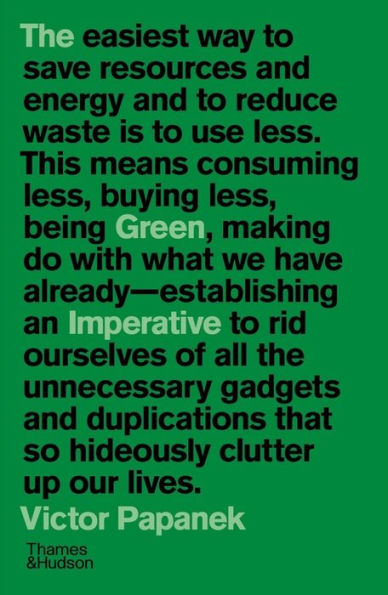Table of Contents
Introduction: The Power of Design vii
Publisher's Note xviii
1 Here Today, Gone Tomorrow? 1
Our damaged planet
The historical view
The acceleration of disaster
Healing on a human scale
Is time on our side?
2 Designing for a Safer Future 14
Production and pollution
Product assessment
Packaging and shrouding
The problem with plastics
Millions of tyres
Green Design
Profit and politics
Design in the 21st century
3 Toward the Spiritual in Design 40
The function of beauty
The designer's intent
Design for Disassembly
Exploiting every scrap
People Participation
Designer as entrepreneur
Evaluating new technologies
Design ethics
Transforming the assignment
4 Sensing a Dwelling 76
Mood and environment
The dimension of light
Footfalls
Feeling the fabric
The sense of smell
Responses to space
Sounds and rhythms
Organic geometry
The collective unconscious
Benign architecture
5 The Biotechnology of Communities 109
Finding the centre once more
People not traffic
The aesthetics of site
The sense of location
Nature's magic numbers
Ideal community size
6 The Lessons of Vernacular Architecture 120
Too humble for history
Six fallacies about vernacular architecture
Process not product
Six explanations
The dynamic web
7 Form Follows Fun 149
Designing for the moment
The fun object
Fashions in form
'Anti-design'
Toy or tool?
The meaning of objects
8 Is Convenience the Enemy? 170
Longing and dissatisfaction
Ten 'convenience' traps
Design as signifier
The chair as design gesture
Fashion and cuteness
9 Sharing Not Buying 202
Getting and spending
The consumer triangle
The quality of life
Ten questions before buying
Three further questions
Possible answers
10 Generations to Come 229
Drawing from different disciplines
The search for good form
Design education for all
World information network
The quality of learning
Creative problem-solving
11 The Best Designers in the World? 256
The edge of survival
Inuit design skills
Space concepts
Thinking in three dimensions
Art is life
Learning from the Inuit
12 The New Aesthetic: Making the Future Work 272
Notes 287
Select Bibliography 299
Sources of Illustrations 308
Acknowledgments 310
Index 313



